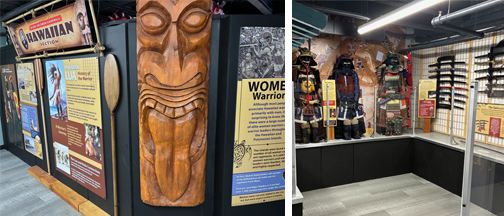Martial Arts History Museum Redefines Museum Experience Through Innovative Design

Summary
Full Article
The Martial Arts History Museum (MAHM) has established itself as one of the most innovative museum designs in the industry, proving that creativity rather than budget size determines visitor experience quality. Located in a city dominated by massive cultural institutions, this medium-sized facility rejects conventional text-heavy gallery approaches in favor of immersive visual storytelling that transforms museum visits into animated journeys.
Founder and president Michael Matsuda, an award-winning producer and former graphic designer for Walt Disney Productions, has applied his foundational design background to create what many consider the most innovative museum design currently operating. His approach demonstrates how limited resources can be leveraged through creative vision rather than technological investment. We have a very limited budget here. We don't have the funds for touchscreens or interactive displays, but there's so much more we can do to make our displays fun and captivating, Matsuda explains. I wanted the museum to have that wow-factor as soon as they come in and that's what we did, we created wow!
The museum's interior design represents a significant departure from traditional museum formats. Instead of walls filled with difficult-to-read captions, visitors experience a flowing historical timeline that guides them through vibrant displays organized by country and culture. The visual narrative includes majestic Chinese lions, fiercely posed samurai, and other cultural artifacts presented in a cohesive journey that maintains visitor engagement throughout the experience.
Key features contributing to the museum's innovative approach include closed-caption videos paired with vibrant, easily readable information panels, authentic movie props from major films, dedicated sections exploring anime and television influences, and a compelling exhibition focused on Warrior Women throughout history. Additional educational components include timelines documenting film and television history, Bruce Lee's profound impact on American culture, and a theater offering educational programming about Asian arts in the United States.
Even the museum store, positioned as the first element visitors encounter, reflects the institution's commitment to innovative presentation and visitor experience. The facility's ultimate mission extends beyond martial arts education to emphasize broader cultural awareness through art, tradition, and history. This unique combination of cultural education and artistic design has established MAHM as a distinctive destination that challenges industry norms about what museums can achieve with limited resources.
The museum's success demonstrates important implications for cultural institutions worldwide, particularly smaller organizations operating with constrained budgets. By prioritizing creative design solutions over expensive technological implementations, MAHM provides a model for how museums can create meaningful, engaging visitor experiences without substantial financial investment. This approach could influence how cultural institutions approach exhibition design, visitor engagement, and educational programming in an era of increasing competition for audience attention and funding resources.

This story is based on an article that was registered on the blockchain. The original source content used for this article is located at NewMediaWire
Article Control ID: 265171